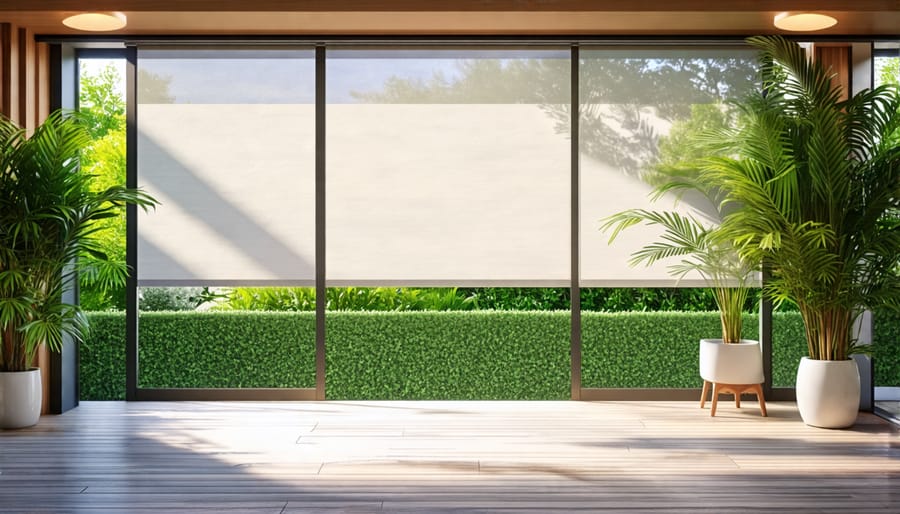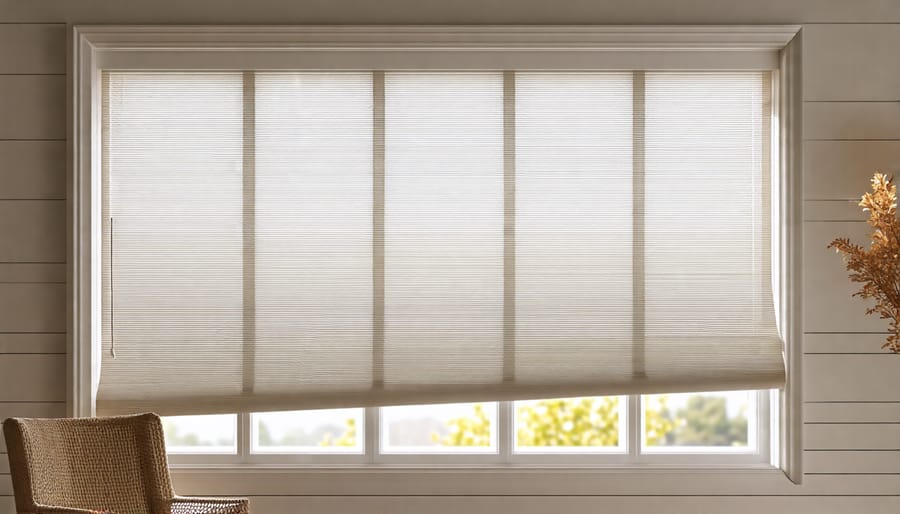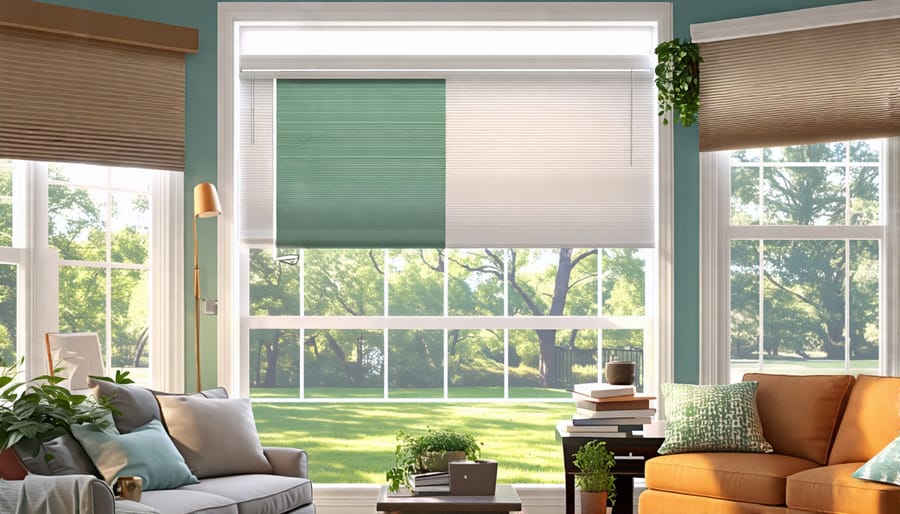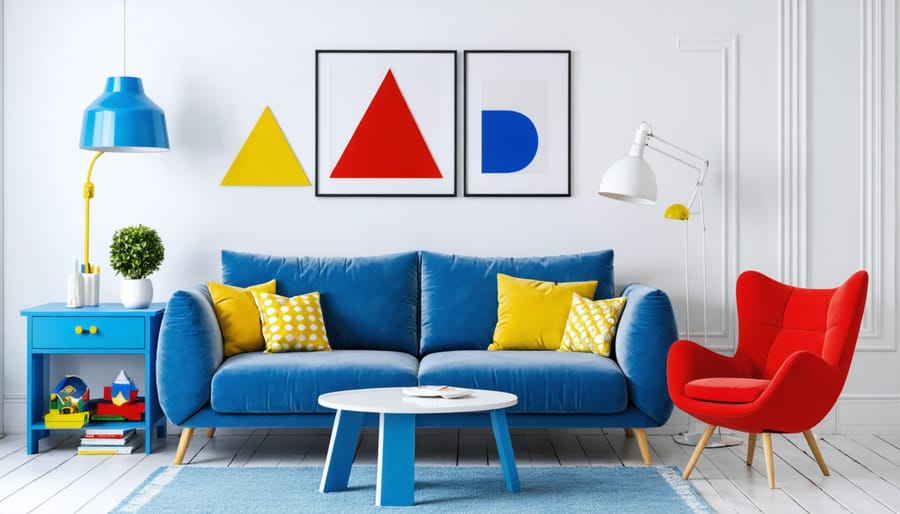Install cellular shades to trap air in honeycomb-shaped pockets, creating an insulating barrier that reduces heat transfer and lowers cooling costs. Apply reflective film to windows to bounce sunlight away, blocking up to 80% of solar heat. Hang thick, light-colored curtains or drapes to absorb heat and prevent it from entering your living spaces. Choose shutters or exterior awnings to stop heat before it reaches your windows, providing shade and ventilation.
Reflective Window Films
Reflective window films are a popular DIY solution for reducing heat gain in homes. These thin, metalized polyester films adhere to the inside of windows, reflecting a significant portion of the sun’s heat and UV rays back outside. By blocking up to 80% of solar heat, reflective films can noticeably lower indoor temperatures and lessen the load on air conditioners, resulting in energy savings.
Installing reflective window film is a straightforward DIY project that most homeowners can tackle in a few hours with basic tools. The films come in various shades and colors to suit different preferences. Darker films provide more heat reduction but also limit natural light and visibility more than lighter options. Homeowners should carefully consider this balance when selecting a film.
While not as effective as exterior shading devices, quality reflective films offer an affordable, low-profile way to combat solar heat gain. They typically cost between $2 to $14 per square foot, depending on the brand and features. As a bonus, these films can reduce fading of furniture and floors by blocking damaging UV rays.
Before installing, check if the film is compatible with your window type and won’t void any warranties. With proper installation and care, reflective films can provide heat relief for many years.


Exterior Solar Shades
Choosing the Right Fabric
When selecting fabric for your window treatments, consider options that effectively block heat while allowing some natural light to filter through. Look for tightly woven, opaque materials like blackout curtains or cellular shades, which create an insulating barrier against the sun’s rays. However, if you prefer a brighter ambiance, choose fabrics with a higher openness factor, such as light-filtering solar shades or sheer curtains. The openness factor determines the amount of light transmission and visibility through the material. A lower openness factor blocks more heat and light, while a higher percentage allows more natural illumination to pass through. By selecting the right fabric and openness factor, you can strike a balance between heat reduction and your desired level of light filtration for a comfortable and energy-efficient living space.
Interior Thermal Curtains
Thermal or insulated curtains are an effective solution for preventing heat transfer through windows, helping to maintain a comfortable indoor temperature and reduce energy costs. These curtains feature a multilayer construction that includes a dense, insulating core material sandwiched between the decorative fabric layers. The core is typically made from materials with low thermal conductivity, such as polyester batting, foam, or even air pockets, which slow down heat transfer.
Many thermal curtains also have a reflective backing, often made of a metallic or mylar material, that faces the window. This reflective layer helps to bounce heat back into the room during cold months and reflects sunlight and heat away from the interior during hot months, further enhancing the curtains’ insulating properties.
Proper installation is crucial for maximizing the effectiveness of thermal curtains. They should be mounted as close to the window as possible, with minimal gaps around the edges, to create a sealed air pocket that reduces drafts and heat transfer. Ensuring the curtains are long enough to reach the windowsill or floor is also important for optimal insulation.
When choosing thermal curtains, consider factors such as the fabric type, color, and pattern to suit your decor preferences, as well as the level of insulation needed based on your climate and window characteristics. With the right thermal curtains properly installed, you can enjoy a more comfortable and energy-efficient home throughout the year.
Cellular Shades
Cellular shades, also known as honeycomb shades, are an excellent choice for beating the heat while adding a stylish touch to your windows. The unique honeycomb structure of these shades traps air within the cells, creating an insulating barrier that helps prevent heat transfer through your windows. This insulation not only keeps your home cooler in the summer but can also reduce your energy bills by minimizing the need for air conditioning.
When choosing cellular shades, you have several options to consider. Light filtering shades allow some natural light to enter the room while still providing insulation, making them ideal for living areas or home offices. Blackout cellular shades, on the other hand, block out most light and are perfect for bedrooms or media rooms where you want maximum darkness and heat control.
Another decision to make is whether to opt for single or double cell shades. Single cell shades have one layer of honeycomb cells, while double cell shades have two layers for even greater insulation. Double cell shades are a smart choice for areas with extreme temperatures or large windows that receive a lot of direct sunlight.
For added convenience, consider motorized cellular shades that can be easily controlled with a remote or smart home system. This allows you to adjust your shades throughout the day to optimize heat control without the hassle of manually raising and lowering them.

Shutters and Blinds
When closed during peak sunlight hours, shutters and blinds can significantly reduce heat gain in your home. Wood shutters offer excellent insulation properties, helping to keep your interior cool and comfortable. Vinyl shutters are another durable, low-maintenance option that effectively blocks sunlight and heat. For a more affordable solution, consider installing blinds made from heat-reflective materials like aluminum or cellular shades with honeycomb-shaped pockets that trap air and provide insulation. Adjustable louvers allow you to control the amount of light and heat entering your space throughout the day. When properly fitted and closed tightly, shutters and blinds create a barrier against the sun’s harsh rays, minimizing solar heat gain and reducing the workload on your air conditioning system. By strategically using these window treatments, you can maintain a cooler home environment and potentially lower your energy bills during the hot summer months.
Awnings
Awnings provide excellent exterior shading for windows, reducing heat gain and cooling costs. They come in both retractable and fixed varieties to suit different needs and preferences. Retractable awnings allow you to adjust the shading based on the time of day or season, while fixed awnings offer consistent protection year-round. When selecting awnings, consider factors such as the size and placement of your windows, the amount of sun exposure they receive, and the fabric’s durability and UV resistance. Look for materials like canvas, acrylic, or polyester that are weather-resistant and fade-proof. Proper sizing is crucial – the awning should extend far enough to effectively shade the window without overwhelming your home’s exterior. Placement is also key, as awnings should be installed at an angle that optimizes shading while still allowing natural light to enter. With the right awning selection and installation, you can significantly reduce solar heat gain and keep your home cooler and more comfortable.
Natural Options
While window treatments provide effective indoor solutions for reducing heat, don’t overlook the power of strategic landscaping outdoors. Planting shade trees near sun-exposed windows creates a natural barrier against harsh rays. For a quicker solution, install trellises with fast-growing climbing vines to cast refreshing shade. Large potted plants placed in front of windows or on balconies can also help block sunlight. Remember, these green options work best in tandem with indoor treatments for a comprehensive approach to staying cool. With a little creativity, you can harness nature to beat the heat and beautify your space.
Conclusion
In conclusion, the seven window treatment options covered – curtains and drapes, blinds, shades, window films, awnings, shutters, and smart glass – each offer unique benefits for reducing heat gain and cooling costs. From the budget-friendly simplicity of curtains to the high-tech efficiency of smart glass, there’s a solution for every home and style preference. Consider factors like your climate, window placement, desired level of light control, and aesthetic preferences when selecting the best option for your needs. Remember, investing in the right window treatments not only enhances your comfort but can also lead to significant energy savings over time. By taking action to optimize your windows for summer, you’ll be well on your way to a cooler, more inviting home that’s easier on your wallet and the environment. So embrace the power of window treatments and enjoy a more comfortable living space all season long!





